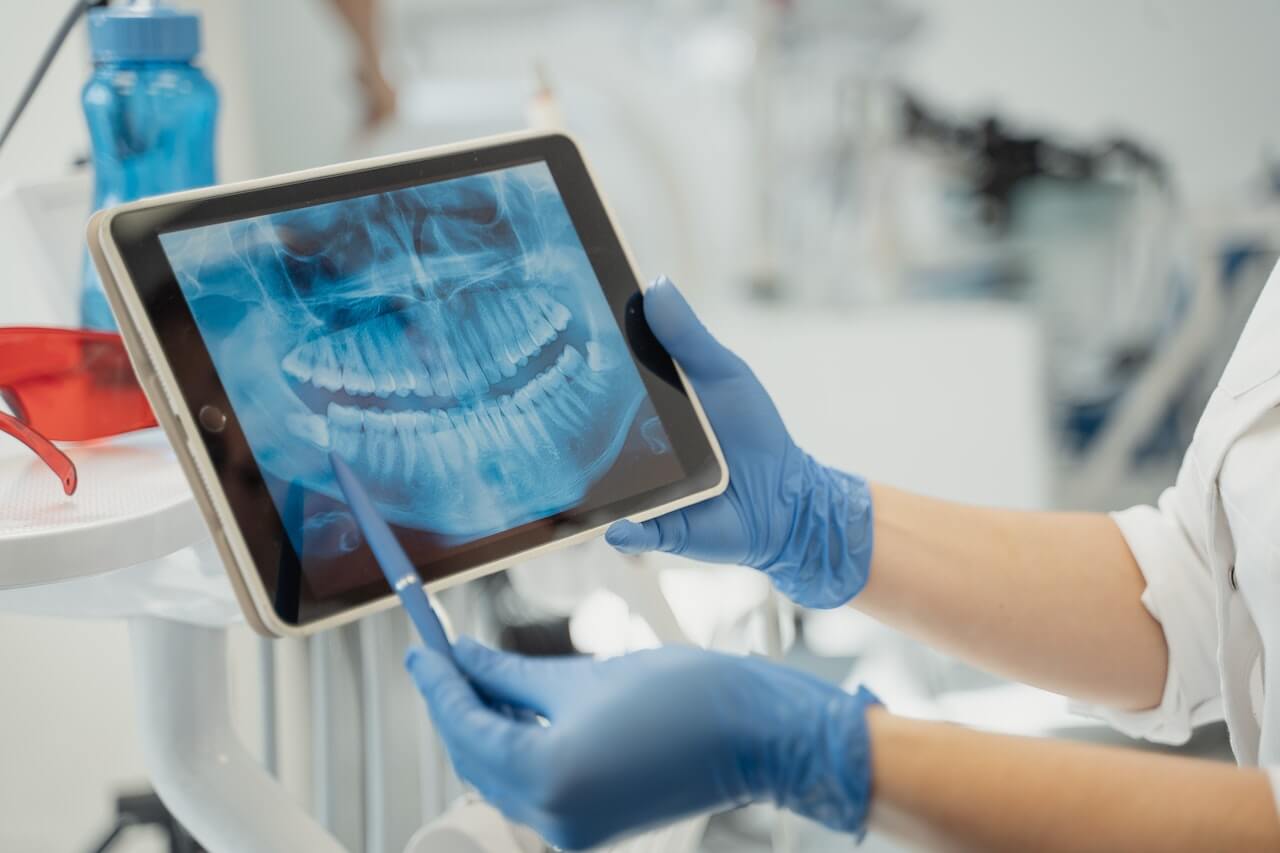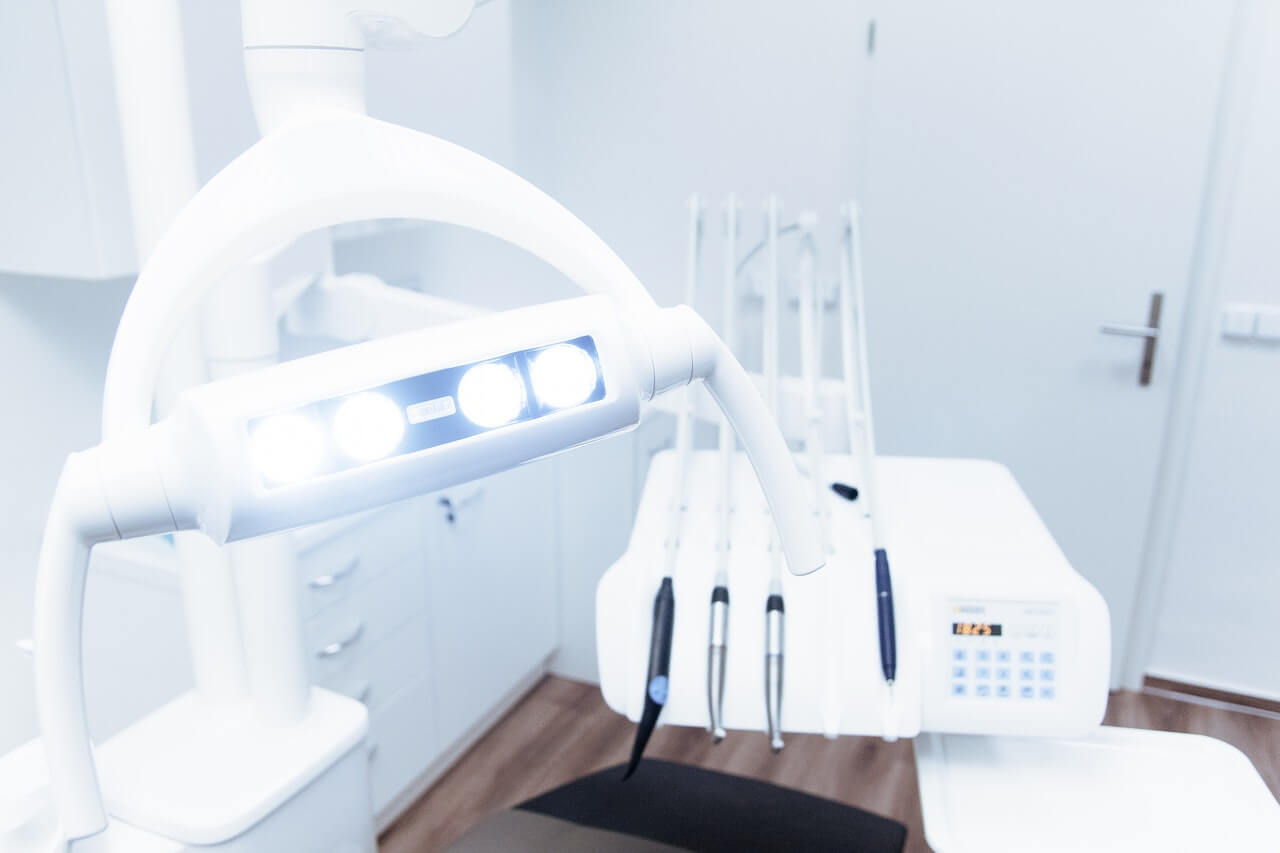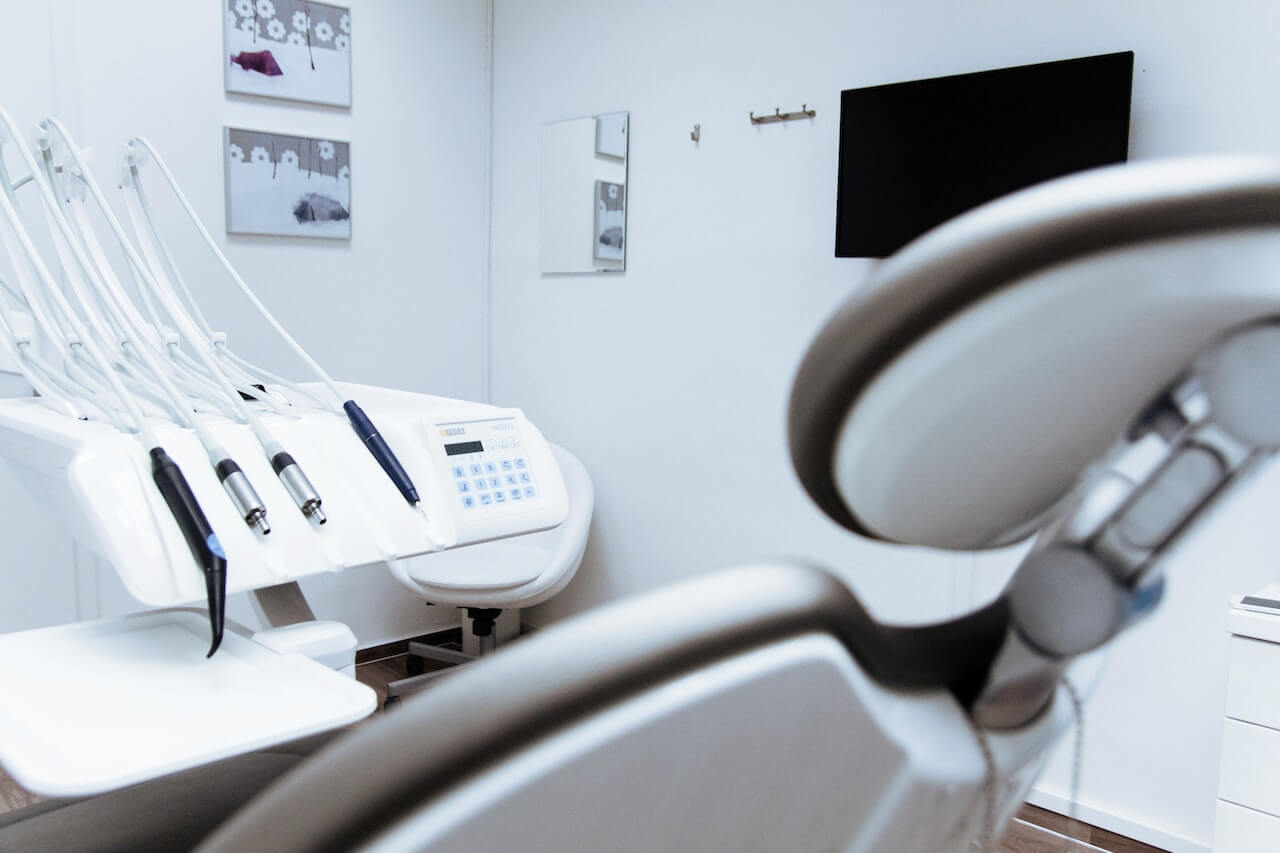Ending the ‘After-Hours’ Admin: Why I Built an AI Tool to Automate Our Dental Notes
If you’re a dentist, you know the feeling. The last patient has left, the practice is quiet, and you’re faced with a mountain of clinical notes. For me, that used…
If you’re a dentist, you know the feeling. The last patient has left, the practice is quiet, and you’re faced with a mountain of clinical notes. For me, that used…
Discover the Magic of Composite Bonding: A Simple and Affordable Solution for a Perfect Smile Do you feel self-conscious about your smile due to chipped, misshapen, or gapped teeth? If…
"What to Expect During Your Cosmetic Dentistry Consultation" Are you considering cosmetic dentistry to improve the appearance of your smile? If so, your first step will likely be to schedule…
10 Ways Cosmetic Dentistry Can Boost Your Confidence Are you self-conscious about your smile? Do you avoid taking pictures or smiling in public because of imperfections in your teeth? If…
"Flossing: The Simple Secret to a Healthy Smile" "The Power of Prevention": Flossing helps remove plaque and food particles from between your teeth, which can prevent cavities and gum disease.…
© 2021 - Dr Stevie Dentistry. All Rights Reserved.
Lorem Ipsum is simply dummy text of the printing and typesetting industry. Lorem Ipsum has been the industry’s standard dummy text ever since the 1500s, when an unknown printer took a galley of type and scrambled it to make a type specimen book. It has survived not only five centuries, but also the leap into electronic typesetting, remaining essentially unchanged. It was popularised in the 1960s with the release of Letraset sheets containing Lorem Ipsum passages, and more recently with desktop publishing software like Aldus PageMaker including versions of Lorem Ipsum.
Over time, your teeth can get damaged. This can happen for a variety of reasons, like tooth decay, injuries or just use over time. Your teeth can lose their shape or size. Dental crowns are tooth-shaped “caps” that can be placed over your tooth. Think of it like a snug hat for your tooth. The crown restores the tooth’s shape, size, strength and appearance.
The dental crown is cemented into place on your tooth and it covers the visible portion of the tooth.
You may need a dental crown for several reasons, including:
The first visit
During the first visit, the tooth that’s going to receive the crown is examined and prepared. X-rays are taken of the tooth and the bone around it.
The tooth that’s receiving the crown will be filed down across the top and sides. This will make space for the crown itself. The amount of tooth that gets filed away depends on the type of crown you have. If too much of your tooth is missing — due to damage or decay — a filling material can be used to “build up” enough tooth structure for the crown to cover. (figure 2)
After reshaping the tooth, a paste or putty is used to make a copy (also called a impression) of the tooth that’s going to receive the crown. Impressions of the teeth above and below the tooth that’s getting the dental crown will also be made. This is done to make sure that the crown will not affect your bite.
The impressions are sent to a dental laboratory. The laboratory makes the crowns and usually returns them in two weeks. During this first visit, a temporary crown(figure 3) is made to cover and protect the prepared tooth while you’re waiting on the permanent crown.
The second visit
At the second visit, the permanent crown is placed on your tooth. First, the temporary crown is removed and the fit and colour of the permanent crown is checked. If everything is okay, a local anaesthetic (“numbing” drug) is sometimes used to numb the tooth and the new crown is permanently cemented in place(figure 4).
Nowadays fillings are not only functional but can be natural looking as well. Most individuals don’t want mercury amalgam fillings that show when they laugh or smile because they are more conscious about the way they look. My Fillings of choice are composite fillings
To make you as comfortable as possible, I will apply numbing gel then further numb the area around the tooth with a local anaesthetic.
Next, I will carefully remove the decayed area from the tooth.
I will apply a dye to the tooth and probe he area during the decay removal process to determine if all the decay has been removed. Once the decay has been removed, I will prepare the space for the filling by cleaning the cavity of bacteria and debris.
Several additional steps are required for tooth-coloured fillings , the tooth-coloured material is applied in layers. Next, a special light that “cures” or hardens each layer is applied. When the multilayering process is completed, I will shape the composite material to the desired result, trim off any excess material and polish the final restoration.
Dental veneers are made from porcelain. This thin piece of porcelain is made to fit over the front surface of your tooth to make it look different and enhance its overall appearance. It can make teeth look straighter, longer or whiter. Placing veneers nearly always involves removal of a small amount of tooth tissue.
Once we have prepared the teeth for veneers we will fit you with temporary veneers which will be in place for approximately 2 weeks, this is the length of time it takes the technician to produce your veneers. Veneers should look at their best for between ten to 15 years. This means continuing with your excellent daily oral hygiene to optimise things for as long as possible. The veneers are extremely unlikely to de-bond from the tooth but they can chip.
What is Tooth Whitening ?
Tooth whitening is carried out by you wearing custom made dental trays over night. These trays are filled with a gel which gently whitens your teeth. The advantages are you control the effects and will see a gradual improvement in the tooth colour. The disadvantages are that the trays must be worn everyday overnight, if there are missed days then the results will be delayed. Nearly all patients get some sensitivity during these days and weeks. Please note the sensitivity is often mild band occasionally patients will take days off bleaching to avoid the sensitivity. It is very important to note that the sensitivity is not an indication of harm coming to your teeth and it is ALWAYS temporary. We will provide you with anti-sensitive toothpaste to help.
What does Dental Bonding involve?
Dr Stevie takes care of you through this procedure. He will first apply a gentle solution
to the surface of your teeth. We leave this on the teeth for around half a minute after
which we rinse the solution off with water. This solution will etch the surface of the
tooth to hep the bonding material stay in place. This process doesn’t hurt. The putty like bonding material is then placed on the tooth surface, shaped and sculpted. A special blue coloured light is used to help the material harden and set . Finally the
composite is polished and buffed for a smooth finish
Advantages of dental bonding include:
Cost. The average cost of dental bonding ranges per tooth from £295
per tooth.
Speed. Dental bonding typically requires 1-2 visits.
Ease. Injections or anaesthesia is usually not needed, unless bonding is being
used to fill a decayed tooth. Compare to porcelain veneers and crowns, dental
bonding also requires the least amount or no tooth removal.
Disadvantages of dental bonding include:
Bonding material can become stained. Unlike crowns and porcelain veneers,
dental bonding is more prone to staining. Coffee, tea, red wine and cigarette smoke
can stain the material used in dental bonding.. To minimise you’ll need to avoid these
substances for 24 to 48 hours. If you’re a smoker you will want to choose a different
form of cosmetic dentistry.
Less durable. Additionally, the material used in dental bonding isn’t as strong
and long lasting as porcelain veneers and crowns. It can potentially chip. With proper
care though, dental bonding can last 3-7 years. If the material does fracture, there is
likely to be an additional charge to repair it in the future.
Alternative options to Dental bonding:
Porcelain Veneers. Porcelain can be used in a similar fashion to composite.
Modern techniques rarely need to heavily adjust the teeth to ‘stumps’, as many
people are worried about. We carry out many NO-PREPARATION porcelain
veneers. Porcelain provides a stronger, more stain-resistant surface, which will
end to survive 10-15 years. Although usually more expensive, porcelain is often the
cheaper long-term solution for larger smile makeovers.
Teeth straightening ( Orthodontics). Braces have improved enormously in
recent years, and often treatment is completed in
just a few months. Ultra- cosmetic
systems are now available. Braces are used to
correct tooth position problems and will be
discussed as an option at your consultation if
appropriate.
Potential Risks, Complications and Important considerations:
• Is tooth enamel drilled? – In most instances composite veneers are applied with no
obvious drilling to the natural tooth enamel. In the case that there is existing large tooth
position problems, the option of some tooth adjustment will be discussed with you at your
consultation if it results in an improved final alignment. For cases that require tooth
adjustment you will be advised beforehand and any alternative solutions (braces) will be
suggested as an option.
• Will you need an injection? – The majority of all cases are completed pain-free and
without the need for local anaesthetic. Exceptions to this are when we are combining
treatment with some filling replacements or situations requiring gum contouring.
• How will it feel afterwards? As with any changes to the teeth, the composite veneers
will feel new and you may feel aware of the surfaces for a few days. Take extra care on
biting during this period until you are used to chewing with your new smile. The composite
resin is fully hardened instantly on placement and no extra care need be taken in this
respect. You should be able to eat, drink, brush and floss with confidence the same day!
• How long does dental bonding last? As with any cosmetic dental procedure composite
veneers will not last forever, and will eventually need to be replaced. Reasons for
replacement may include chipping, colour fade, natural underlying tooth movement or
veneer loss.
• Can you whiten composite bonding? Although composite cannot actually be
whitened, stain reduction is improved with careful daily cleaning and the occasional use of
dental whitening products. Teeth whitening on any teeth planned to be left untreated is
usually carried out before the bonding appointment, and the veneer shade can be chosen
later. The most suitable system to whiten your teeth will be discussed at your consultation.
All whitening results WILL NATURALLY FADE and occasional whitening top-ups may be
required using at home use products.
• Review appointment. Once bonding placed on teeth a review appointment will be
booked to ensure happy with your results. Should you desire any changes to shape and size
of teeth you must discuss at the review appointment. Additional charges will be added for
alterations at a later date.
• Maintenance of bonding. This is required to retain appearance of composite bonding
as bonding is prone to staining just like natural teeth.
• Shade Match. Before the procedure is undertaken we will endeavour to ascertain the
correct shade of material to suit your needs. Please be aware that once the shade has been
agreed it will be possible to change but will incur extra charges.
•Longevity. It is impossible to place a specific time
criteria on the actual length of time that composite
bonding will last, although 3-7 years is commonly
reported.
•Wearing a Night time appliance. If there is a
predisposed tenancy to clench and grind your teeth at
night, your composite will be at risk and therefore
extremely important to wear the night time appliance
provided.
• Unable to bond composite filling to metal fillings, porcelain/metal crowns. All
metal fillings can be replaced with bonding and existing crowns can be replaced in order to
match new bonding procedure.
Maintenance of Dental Bonding
After your bonding appointment. We ask that you arrange a follow-up review
appointment within the 1-2 weeks after having your bonding placed. This will allow us to
confirm you have had no difficulties and advise you on any ongoing home care. At this
appointment there may be small adjustments requested or required before a final polish is
carried out.
;
Things you can do to help:
• Cut down on coffee, tea and red wine.
• Use an electric toothbrush at least twice daily for 2 minutes to ensure excellent hygiene is
maintained. Floss in between your teeth or use recommended interdental aids.
Things you must do to keep the bonding looking fresh and safe:
Regularly visits to the hygienist to get your teeth and bonding cleaned (every 3-6 months).
Yearly polish by Dr Stevie to maintain bonding shine
Wear a night time retainer to prevent your teeth from moving or chipping.
Finally if the bonding fractures or chips, which can happen at ANY time there will be a
charge for repair of this. I do include 6 month free repairs after the cost of the repair will
normally be the full cost paid again for the tooth again although it does depend on the size of
the chip
How does Invisalign work?
Invisalign aligners move teeth through a series of carefully controlled movements. Unlike traditional braces, Invisalign treatment not only controls the amount of movement that each aligner delivers, but also the timing of the movement. So, at each stage, only certain teeth can move, following the Invisalign treatment plan for that particular stage. This results in an efficient force delivery system.
Each aligner is worn for about two weeks before being replaced by the next in the series, gradually moving towards the projected final position. The treatment time depends on your specific needs and will be decided by myself and invisalign
How much does Invisalign cost?
As with other types of orthodontic treatment, the cost of Invisalign treatment depends on the complexity of your teeth straightening issue and your course of treatment. As a general rule the cost for adults is comparable to traditional fixed braces and is typically between £2,500 and £4000. Finance options included
How do I get started with Invisalign?
Make an appointment for an initial consultation.
How long does the Invisalign treatment take?
The time taken depends on the complexity of the treatment and is generally comparable to that of traditional braces. During your consultation, I can give you more detailed information.



